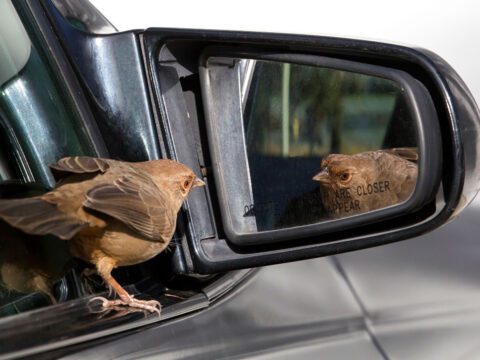World Series of Birding: Sneak Preview from New Jersey
May 7, 2009
The countdown to the World Series of Birding has begun: the nation’s best birding teams have only 1.5 days left to figure out where all of New Jersey’s bird species are and—even harder—to figure out a winning route to find them all again on May 9. Starting at midnight on Friday, the Cornell Lab of Ornithology’s teams will be vying to find the most bird species in 24 hours—and raise the most funds for conservation.
It’s been a cold, wet week in New Jersey, Ken Rosenberg told me by cell phone as he scanned for Worm-eating Warblers in the northwestern part of the state. Ken, a 20-year veteran of the WSB and now-retired captain of the Cornell Lab’s Team Sapsucker, says this year he’s just the “sandwich guy”—relegated to making sure the new young team is well stocked with Wawa sandwiches and other Big Day fare. Still, it sounded like he was having fun scouting for the team and seeing how this year’s competition is shaping up.
Because of the rain, he said, it’s been hard to find birds, but a change in the weather is expected to bring in birds tonight and tomorrow—meaning that the teams have may to do some quick improvising to adjust their route. So far, he said, Winter Wrens have been cooperative (five seen so far), but no signs of grouse.
More bird reports arrive from Team Sapsucker and The Redheads (the student team named for the Cornell “Big Red”) via Twitter, including highlights (Swallow-tailed Kite seen and photographed, Green-tailed Towhee, Sandhill Crane, Yellow-billed Cuckoos) and lowlights (“Rain again, No birds,” “Sea Isle City causeway construction!! One lane of traffic. Big Day disaster.”) You can follow their progress directly on the Team Sapsucker and Redheads Twitter feeds.
Last year, the Sapsuckers and Redheads set an all-time record for most funds raised in the World Series of Birding—$200,000. With many bird populations in serious decline, the teams hope to raise even more this year to help birds in trouble.
Donations to The Redheads last year funded student research, including an expedition to a remote region of Peru, resulting in new scientific information about little-known birds and increased awareness of conservation needs. Donations to Team Sapsucker helped conservation efforts across the hemisphere for Golden-winged Warblers and other imperiled birds. The funding also enabled Cornell Lab scientists to advance technologies for detecting the calls of birds migrating at night—a useful source of information for conservation decisions, including where to place wind turbines to minimize impact to wildlife.
So far this year, the Sapsuckers and the Redheads have rounded up about $180,000 in pledges. With an extra boost from supporters, they could surpass the $200,000 record. If you would like to support Team Sapsucker or The Redheads, and help birds at the same time, visit the Cornell Lab’s World Series of Birding website or call (866) 989-BIRD. Every cent goes directly to bird conservation programs and student training, thanks to longtime sponsor Swarovski Optik, which covers the teams’ expenses.
And if you’re down in Cape May competing in the World Series yourself, good luck and good birding!
More about the World Series of Birding:
- Team Video: Meet the Sapsuckers
- Voice of America interview with Ken Rosenberg and Lillian Armstrong about the World Series of Birding
- Make a Donation
- Official World Series of Birding site from New Jersey Audubon

All About Birds
is a free resource
Available for everyone,
funded by donors like you
American Kestrel by Blair Dudeck / Macaulay Library




